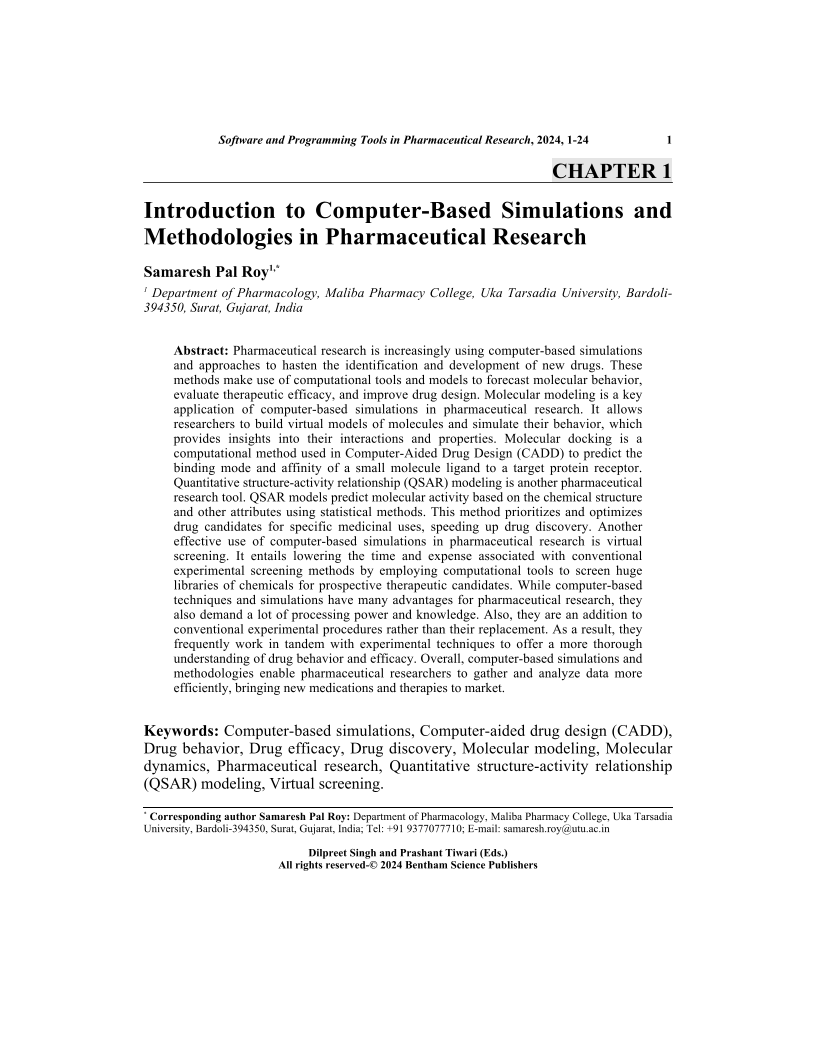Introduction to Computer-Based Simulations and Methodologies in Pharmaceutical Research

- By Samaresh Pal Roy1
-
View Affiliations Hide AffiliationsAffiliations: 1 Department of Pharmacology, Maliba Pharmacy College, Uka Tarsadia University, Bardoli394350, Surat, Gujarat, India
- Source: Software and Programming Tools in Pharmaceutical Research , pp 1-24
- Publication Date: March 2024
- Language: English
Introduction to Computer-Based Simulations and Methodologies in Pharmaceutical Research, Page 1 of 1
< Previous page | Next page > /docserver/preview/fulltext/9789815223019/chapter-1-1.gif
Pharmaceutical research is increasingly using computer-based simulations and approaches to hasten the identification and development of new drugs. These methods make use of computational tools and models to forecast molecular behavior, evaluate therapeutic efficacy, and improve drug design. Molecular modeling is a key application of computer-based simulations in pharmaceutical research. It allows researchers to build virtual models of molecules and simulate their behavior, which provides insights into their interactions and properties. Molecular docking is a computational method used in Computer-Aided Drug Design (CADD) to predict the binding mode and affinity of a small molecule ligand to a target protein receptor. Quantitative structure-activity relationship (QSAR) modeling is another pharmaceutical research tool. QSAR models predict molecular activity based on the chemical structure and other attributes using statistical methods. This method prioritizes and optimizes drug candidates for specific medicinal uses, speeding up drug discovery. Another effective use of computer-based simulations in pharmaceutical research is virtual screening. It entails lowering the time and expense associated with conventional experimental screening methods by employing computational tools to screen huge libraries of chemicals for prospective therapeutic candidates. While computer-based techniques and simulations have many advantages for pharmaceutical research, they also demand a lot of processing power and knowledge. Also, they are an addition to conventional experimental procedures rather than their replacement. As a result, they frequently work in tandem with experimental techniques to offer a more thorough understanding of drug behavior and efficacy. Overall, computer-based simulations and methodologies enable pharmaceutical researchers to gather and analyze data more efficiently, bringing new medications and therapies to market.
-
From This Site
/content/books/9789815223019.chapter-1dcterms_subject,pub_keyword-contentType:Journal105

